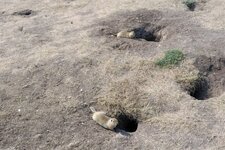Spring is in the air…
View attachment 135270
Our forum is drifting inexorably towards winter mode: threads on winter clothing and tyres are appearing; there are musings on whether autumn colours will be up to their usual standard. Rest assured, it will be 'more of the same'.
Meanwhile, in the southern hemisphere, spring is upon us and native flowers are in bloom (they often 'jump the gun' and flower as early as July) and the birds have come to enjoy the nectar bounty.
I spied this pair of Blue-faced Honeyeaters as I left home to ride into Ipswich to visit Jen, whose garden it really is. These honeyeaters' possession of the grasstree flowers would be brief: our bossy little attack birds, the Noisy Miner mob (also honeyeaters), had already dispatched an assailant to see them off.
View attachment 135327
The trunk of this grasstree was about a metre wide and two metres tall which is well advanced for a xanthorrhoea growing close to town. By contrast, the erect flower spikes seen in the photo had grown to over four metres in about the same number of weeks! In the garden photo, the honeyeaters' grasstree is on the right. The lower parts of the flower spikes are obscured by the 'grassy' leaves from which the plant—neither a tree nor a grass—takes its common name.
The age of grasstrees cannot be determined by 'counting rings'; instead, one relies on the 'tried-and-tested method' (really!) of reckoning 25mm increase in height per year. Divide 2000mm by 25mm and you get? About my own age!
Apparently, grasstrees can have it both ways in their senior years—life in fast lane as well as the slow lane.
View attachment 135326
Scene of the Action
Look carefully and you'll notice several Rainbow Lorikeets on the tallest grasstree flower stalks. Lorikeets aren't molested by miners (they wouldn't dare!). I wonder whether wearing a rainbow-hued clown suit sends a
don't-mess-with-us message to other birds: just musing, almost certainly nothing of the sort!
There are some smaller grasstrees (species
Xanthorrhoea australis) around my Trek Powerfly. Some of these sport last year's flower stalks, each spike bearing hundreds of seeds in hard cases.
and hoping I have time to do some rehab before my ebike tour
!


